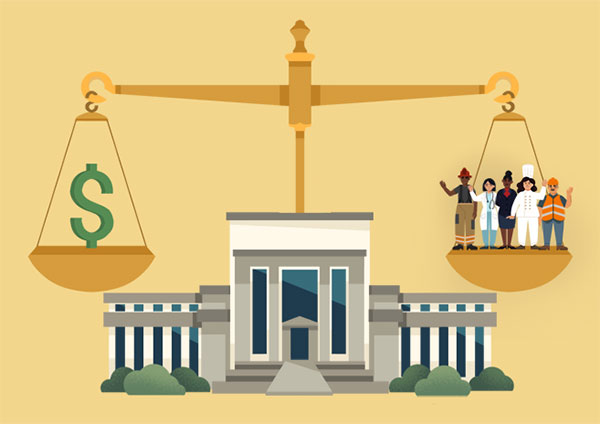The Fed and the Dual Mandate

The Fed has a dual mandate of price stability and maximum employment.
Keeping our economy healthy is one of the most important jobs of the Federal Reserve. The Federal Reserve System has been given a dual mandate—pursuing the economic goals of maximum employment and price stability. It does this by using a variety of policy tools to manage financial conditions that encourage progress toward its dual mandate objectives—in other words, conducting monetary policy.
Price Stability
One part of the Fed’s dual mandate is price stability. Price stability means that inflation remains low and stable over the longer run. When inflation is low and stable, people can hold money without having to worry that high inflation will erode its purchasing power.
For example, a 2 percent annual inflation rate means that—on average—a dollar buys 2 percent fewer goods and services than it did the year before. That seems manageable, but what if it was 10 percent? With stable prices, consumers and businesses don’t have to worry about rising or falling prices when making plans, or when borrowing or lending for long periods. In short, the economy can run efficiently when inflation is low and stable. But how low is low? The Fed seeks to achieve inflation that averages 2 percent over time.
—Chair Powell, Aug. 27, 2020 speech
Maximum Employment
The other part of the Fed’s dual mandate is maximum employment. The concept of maximum employment can be thought of as the highest level of employment that the economy can sustain over time. Of course, measuring this concept is hard because the level of maximum employment varies over time with business conditions, demographics, labor market regulations, and other factors. Rather, the Fed considers a wide range of employment indicators to estimate the shortfalls of employment from its maximum level. In short, the Fed does not have a numerical target for the level of employment; rather, the Fed analyzes economic conditions using a wide range of data to design policies that achieve maximum employment.
Are the Fed’s Dual Mandate Goals Complementary?
The Fed’s goals of maximum employment and price stability are generally complementary. An economy with low and stable inflation provides economic conditions that are friendly to business planning, saving, and investing, which results in a growing economy. A growing economy needs workers to produce goods and services.
Of course, there are times when the goals are not complementary. In the late 1970s and early 1980s, for example, the economy experienced both high inflation and high unemployment (low employment). The Fed decided to reduce the high inflation rate by raising interest rates to very high levels, which contributed to two back-to-back recessions. Over time, inflation returned to a low and stable level, the economy recovered and the unemployment rate fell, which means that employment levels rose toward maximum employment.

